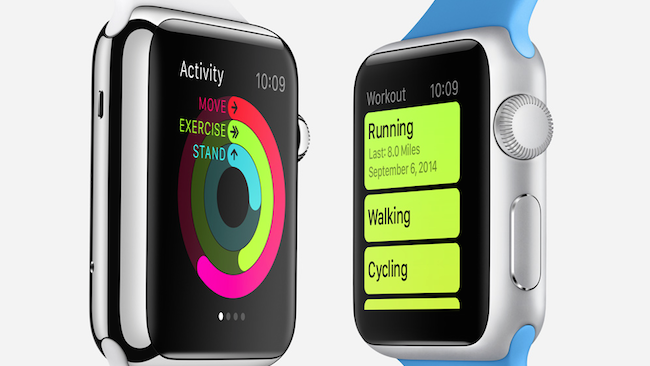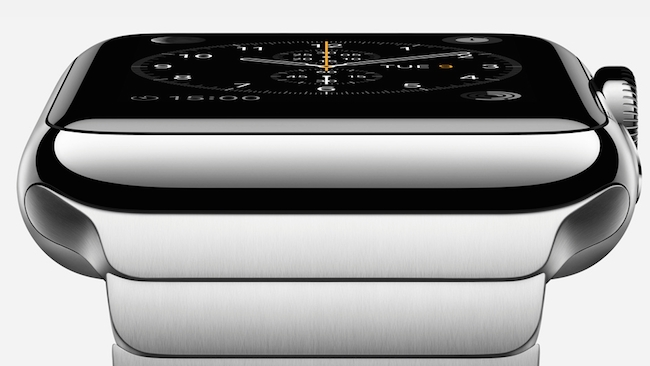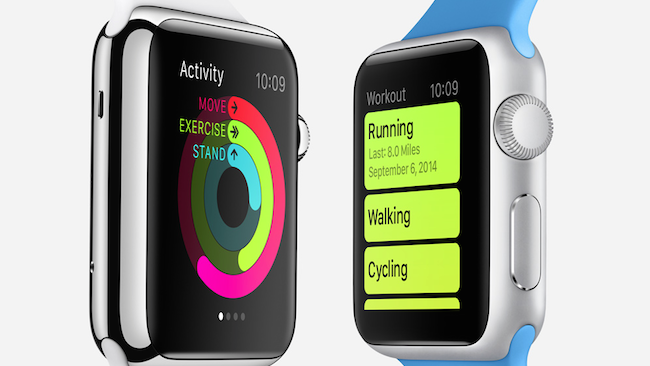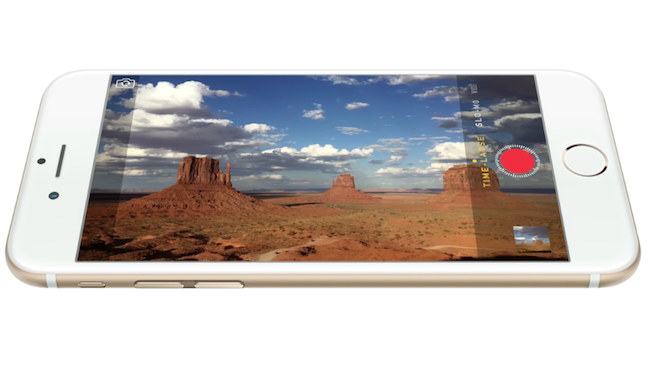
 Apple's new Watch
Apple's new Watch
On the stage where Steve Jobs first launched the Mac and then kicked off Apple’s Lazarus-like rebirth with the original iMac, Tim Cook finally played the ‘one more thing’ card with Apple’s most personal computer yet. Not the iWatch, but the Apple Watch. K.Stewart reports.
This was an exceptionally polished, whirlwind presentation that ended a long drought of Apple product announcements with a real bang.
No time for the usual sales and market share keynote slides. With little or no prelude, Cook went straight into the iPhone 6 and 6 Plus reveal, there was a quick breather for Apple Pay, then the Watch and closing with U2 on stage and an unprecedented gift of U2’s latest album as an immediate free download for all iTunes customers. Not a bad show overall.
Personality & intimacy
After the elegantly traditional, watch-inspired design of the Moto 360, Apple’s Watch looks at first glance quite retrograde. A chunky, rectangular design with a prominent ‘digital crown’. A premium finish, including that sapphire face, helps justify a $350 starting price, but why is this the watch that Jony Ive reported said would “f*ck Switzerland”?
As with the original iPhone, the hardware is only part of the puzzle, and is primarily again a minimalistic frame and extension for the user interface. The most surprising aspect of the Watch presentation was the concept of intimacy. The obvious idea of a watch being Apple’s most personal device led to some interesting ideas: confirming a dinner date by sending your heartbeat; crafting a beautifully rendered 3D emoticon into a personalised message by reshaping its face; drawing a fish to suggest a sea food meal; tapping out a rhythm which will play out on your friend’s wrist.
Blown up on a 30-ft screen, the Watch’s UI was charming and engaging. The notion of ‘pinch and zoom’ on a watch was ridiculed — the Watch has a re-imagined UI. The Mac had the mouse. The iPod the click wheel. The iPhone Multi-Touch. The Watch has that digital crown to scroll through menus, to zoom into maps without obscuring the screen.
The iPhone’s App springboard is re-imagined as a constellation of circular icons with the digital crown to zoom and an upward swipe on the watch face to bring up notifications. Of course there’s Siri for dictation or audio commands, but also soft intelligence in parsing messages to pull out key words to aid a multi-choice, single tap response.
You feel notifications on your skin subtly enough that a person sitting next to you wouldn’t notice. When following (Apple) map directions, notifications against your wrist indicate when and which direction to turn. The screen itself has sensors to detect not just touch, but the forcefulness of an input, to provide more sophisticated, more subtle input — a technique that developers will need to master.
The UI runs on a bright, high resolution Retina-screen and is (in demo) super-responsive. Apple representatives declined to reveal details on battery life and the after-event hands-on revealed prototype units with very much unfinished software.
The original iPhone was, of course, first shown in prototype form with a ‘golden path’ of functionality that avoided a legion of bugs — and still it crashed during Steve Jobs’s original presentation — so this isn’t unusual. An early announcement not only helps build customer hype, it also provides time for app developers to create compelling software for a new platform.
On the day that the Classic iPod had its end-of-life, Tim Cook made clear the Watch is a new class of devices for Apple. It’s not a one-off iPhone accessory. It’s the start of something new.
Health & Fitness

Aside from the fun and intimacy of the Watch UI, which of course rivals will attempt to mimic before it ships, there’s the expected focus on health already explored to a certain degree by rivals such as Samsung.
That said, at a company so dramatically marked by the early death of its iconic founder, there’s a certain resonance in its determination to make the Watch a game changer for health. Tim Cook has created a dedicated team within Apple devoted to these applications and there was a considerable (exhausting?) amount of time outlining the possibilities.
A Fitness app is all about tracking your daily activity, supported by a barometer addition to the iPhone 6 that tracks altitude, so climbing stairs counts more than walking. A Workout app lets you set specific goals for exercise.
The word ‘gameification’ wasn’t used, but that principal of encouraging an activity by making it playful and fun was a clear thread through the presentation. Tim Cook is known as a fitness enthusiast and you could really see his personal enthusiasm come through here.
As the Watch presentation closed, Cook talked about using the Watch to control Apple TV, as an iPhone camera viewfinder, even a walkie-talkie. There’s no obvious must-have game changer as yet, other than possibly health for enthusiasts, it’s all about being fun, convenient, small interactions, an enjoyable experience. That said, of course it requires iPhone, but will work with anything from an iPhone 5 up. It’s not limited to the 6.
We don’t yet know how well the battery will make it through the day, but charging is via a circular inductive charger that latches on quickly, easily via magnets.
Pricing starts at $349 and it will ship in 2015. There will be a standard stainless steel version, aluminium ‘sports’ watch and 18 karat gold bling model, each with two colour variants. All three are available in 38mm or 42mm size bodies, plus there’s six different straps to provide 72 options just for launch. Ordering online rather than visiting retailers seems the best idea for getting the specific model you want.
Bigger is always better…
Amusingly, one of the presentation’s rare mis-steps was CEO Tim Cook’s Freudian slip in the wrap up admitting bigger is better rather than keeping with the corporate message about evolved design etc.
In truth, the iPhone was at launch one of the biggest phones — compare and contrast with Motorola’s Razr — but Steve Job’s insistence on keeping it easy to use one-handed allowed Android to pioneer and dominate the market for larger phones without any iOS competition.
That’s now changed.
The standard 4-inch screen introduced with the iPhone 5 is retained within the line-up with last year’s 5S and 5C moving down to be the entry-level. However, the iPhone 6 is 4.7-inch while the iPhone 6 Plus lives up to its name with a 5.5-inch screen.
Sadly, there are no sapphire screens, just ‘ion-strengthened glass’ with sRGB accurate displays and ‘dual-domain’ pixels for a wider viewing angle. The 6 retains the previous generation’s 326 PPI, while the Plus gets 401 PPI — over one million pixels in a 1080p display. In a true like to like comparison, the 6 has 38% more pixels, is a 38% bigger screen, than the 5S. The Plus, by virtue of sheer size and higher resolution has 185% more pixels (a million of them in total).
To make use of the bigger screen, Apple’s own apps are borrowing lessons from the iPad with Messages, Mail, Weather etc. having specific horizontal views that provide more information. The Plus also has a Reachability feature whereby double-tapping on home slides the screen down so, in one-handed mode, you can reach otherwise out of reach UI elements. It’s effective more than it’s elegant, let’s say.
At least in the hand, it will feel easier to hold. Since the iPhone 4, Apple smart phones have had a distinctive hard edge. Now that they’ve gone big, the sides have softened into gentle curves — all the better to squeeze into your pocket, of course.
Inside, we get the next generation of Apple’s market-leading 64bit A-Series chips - the A8. The number of transistors is doubled to 2 billion with a 20nm process. The CPU is 25% faster, the GPU 50% faster - which is welcome, but a less dramatic leap than previous generations. The key here is energy efficiency, which has improved by 50% and means no need to throttle performance - as well as enabling another Apple tour de force of super-slim engineering for both models. The 6 is 6.9mm, the Plus 7.1 mm in depth.
Gamers (and other power users) could put up with a few more millimetres in service of higher performance and battery life, but there’s few enough games pushing the iPhone as it is.
Metal is Apple’s graphics software for developers and, notably, it was a multi-player game (Vain Glory) that provided the first iPhone on stage demo. While not a challenger to Activision’s Destiny (which shared its launch with the Apple press conference), smoothly animated 60fps graphics showed a mobile device playing in the same leagues as the PS3/Xbox 360.
As an actual phone, the 6 and 6 Plus boast a new feature called Wi-Fi calling which enables a seamless transition between cellular and wi-fi calling — in the UK EE will be the first carrier to support this. LTE performance is improved from 100 to 150Mbs, plus more importantly 20 LTE bands.
iPhone Plus: your next camcorder?

On the eve of IBC, there was a certain wry amusement in seeing Apple’s Phil Schiller boldly take aim at camcorders as the next class of devices destined to be marginalised by smart phones.
He’s targeting consumer handy cams rather than RED or Sony F55s, of course, but at the same time there’s no doubting Apple’s seriousness in this area — every keynote gives plenty of time to photography and with the larger size iPhones, there’s more space for chips and optics.
The 6 Plus is the first iPhone to boast optical image stabilisation, while both iPhone 6s have a 5-element lens, a new imaging sensor and an Apple designed image signal processor built into the A8 chip for features such as face detection, advanced blink and smile detection. A new gyroscope improves picture stitching for panoramas up to 43 megapixels. Focus pixels support high-speed continuous auto-focus, a feature lifted from high-end DSLRs.
On stage demos showed 1080p videos (now supporting 60fps as well as 30fps) to illustrate why consumer camcorders are under threat. Slow-mo at 120 and 240fps, plus time-lapse video — the latter an iOS 8 feature which isn’t limited to the iPhone 6s.
Pre-orders start on Friday 12th with first shipments on September 19. The iPhone 6 starts at £539, while the Plus is £619 - both with 16GB now rather than 8GB. 64GB models are £619/699 and 128GB £699/789. The colours are the same three as the previous generation.
The new iPhones inevitably come with iOS 8, which will be available for older phones on September 17th. The rich feature set of iOS8 — particularly the means by which apps can share information — has led many to view it as a true iOS v2 after the visual refresh that came with iOS7.
Tech writer David Chartier puts it this way; “App Extensions in iOS are game changing… Apps will be able to work together and exchange information in ways that are more efficient and convenient than many desktop apps. You heard me. If you were testing some of the apps I have right now, you’d believe me, too.”
We’ll likely hear more about this with the 2014 iPads expected to launch in October.
Apple Pay
We’ve been a long time waiting for Apple to make use of the Touch ID security technology and iWallet to change the way pay for stuff.
Surprisingly, while Apple’s iBeacon retail technology is based Bluetooth, the 6 sees Apple follow Android in integrating a NFC chip, although in Apple’s case its partnered with a Secure Element chip. By piggybacking on NFC, the iPhone 6s can be used at 220,000 US retail locations with more to come, including McDonalds, Disney etc.
Tim Cook was particularly animated at the speed and simplicity of the transaction using Apple Pay. Touch and go. Partly this can be explained by America’s rather archaic payment infrastructure which hasn’t fully taken to chip-and-pin. Hence Cook’s jab at the 50-year-old magnetic strip technology US credit cards still mostly rely on.
$12bn in credit/debit transactions a day in the US is obviously a nice business for Apple to be in. And ease of use with iPhone (and iWatch) helps with the stickiness of the eco-system.
But for Europeans, the real magic came with online payment. A demo showed a Target retail app accepting a Touch ID purchase that supplied credit card details, plus address with a single touch. No more laboriously filling in online forms to buy stuff… That was a tantalising possibility, although how quickly and how many retailers adopt remains to be seen.
It’s worth noting that Apple’s system makes use of one-time payment codes in a system based on your credit card. If your phone is stolen, you can use Find Your iPhone to wipe it of course, but there’s no need to cancel your credit card.
Again, the devil is in the detail, and the security of the Apple Watch for payments is particularly unclear, but it’s promising.
Apple’s best line-up in 25 years?
The iPhone 6/Watch reveal should be followed by new TouchID iPads in October, while Retina MacBook Air’s wait on Broadwell. iOS8 in particular promises to finally make the iPads a serious competitor to MacBooks, not just a powerful satellite or stand-alone recreational device, plus a powerful kick-start to what Apple hopes will be the next phase in the iPads previously sensational growth rate.
And the Watch itself is revealed… but only in part. Until the software is finished, the functionality and extended apps tested hands-on, the battery life confirmed, we can’t know if Tim Cook has delivered another iPhone or another Newton. A revolution or merely an interesting precursor.
As a human story, Cook’s sheer joy at being on stage and having the ‘one more thing’ slide behind him makes us hope it’s the former.
Tags: Technology


Comments